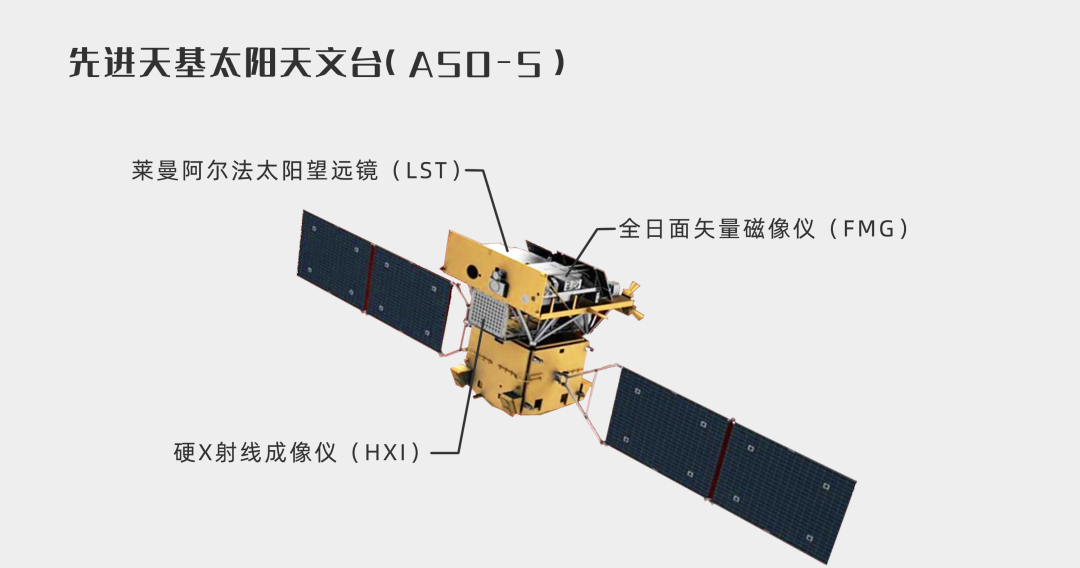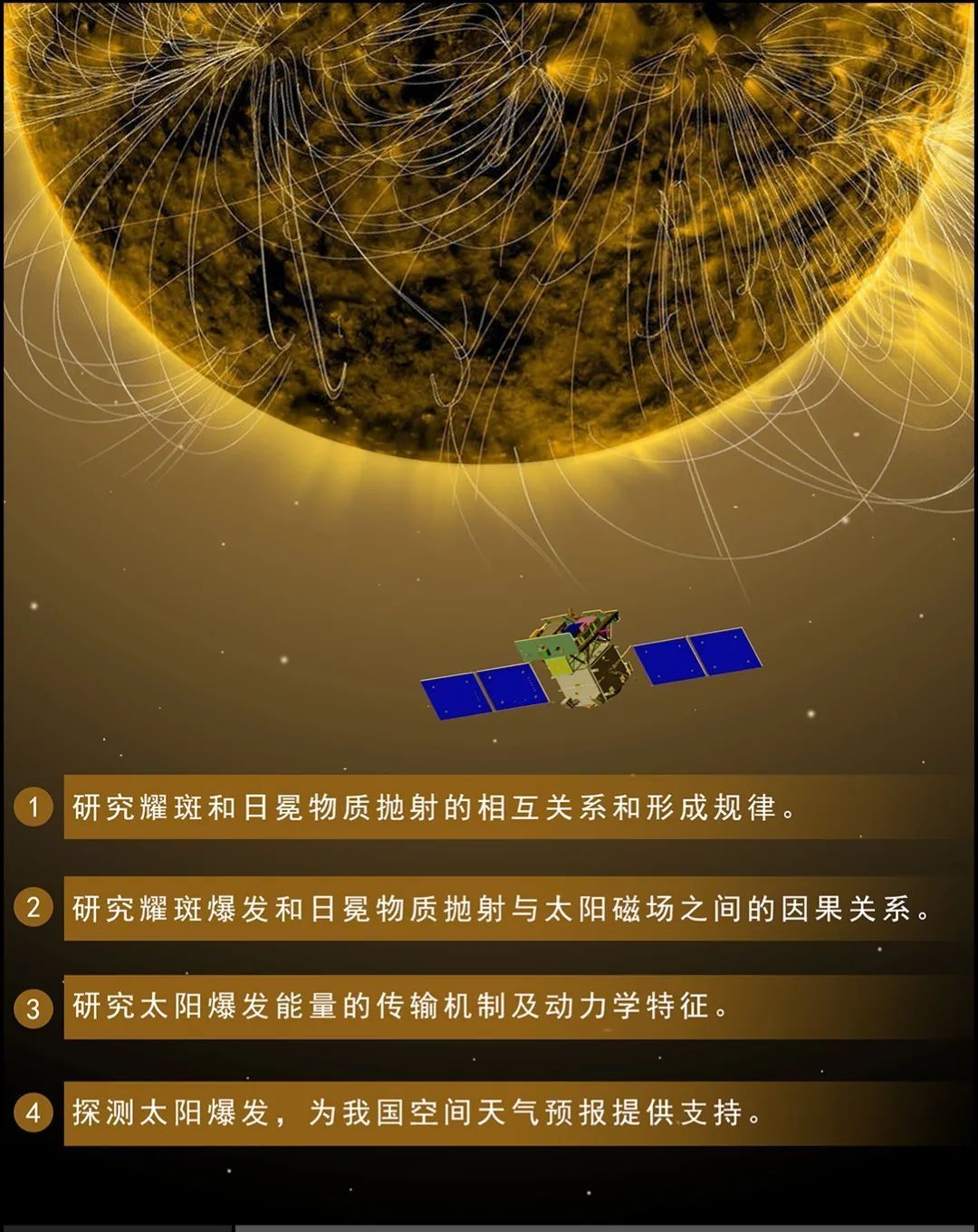Reported on Oct. 9,2022.the Advanced Space-based Solar Observatory satellite was launched into space at 7:43 PM on a Long March 2D-D carrier rocket from Jiuquan Satellite Launch Center in Jiuquan, China. The satellite entered the preset orbit and the mission was a complete success.
History Background
Since the 1960s, the world's space powers have launched dozens of solar exploration satellites into space.China has been absent from this journey of solar exploration with dedicated satellites.
DeVelopment Process
1)The Advanced Space-Based Solar Observatory is a solar space exploration satellite independently proposed by the Chinese solar physics community in 2011.
2)On April 28, 2016, the Advanced Space-based Solar Observatory (ASO-S) successfully passed the final acceptance review of background model.On November 19, EP and ASO-S passed the review of preliminary technical indicators and application requirements.
3)On March 11, 2017, the Second phase of the Strategic Pilot Science and Technology Project of Space Science Einstein Probe (EP) and Advanced Space-based Solar Observatory (ASO-S) satellite project launch vehicle selection review meeting was held in Beijing .From May 9 to 10, the review meeting of program demonstration report of ASO-S satellite engineering satellite system, ground support system and scientific application system was held in Beijing.On June 16, the ASO-S satellite project passed the project approval.
4)On July 4, 2018, the Bureau of Major Tasks of Chinese Academy of Sciences (CAS) held the "Space Science (Phase II)" strategic pilot science and technology Project kick-off meeting and EP and ASO-S satellite project kick-off meeting at the National Space Science Center, CAS.
5)On April 28, 2019, the ASO-S satellite passed the development summary of the scheme phase and the preliminary design review.
6)In March 2021, ASO-S had completed the preliminary sample development stage and entered the formal sample development and subsystem integration test stage.
7)In August 2022, the Tiny Satellite Innovation Institute of the Chinese Academy of Sciences held the launch ceremony of the Advanced Space-based Solar Observatory satellite.

Science Target
1) Simultaneously observe the two most violent solar eruptions, flare and coronal mass ejection (CME), which have an important impact on the earth space environment, and study the relationship between flare and coronal mass ejection (CME) and their formation rules.
2) To observe the solar vector magnetic field on the full solar plane and study the causal relationship between solar flares and coronal mass ejections and the solar magnetic field.
3) To observe the response of different levels of solar atmosphere to solar bursts, and to study the transmission mechanism and dynamic characteristics of solar burst energy.
4) To detect solar eruptions and forecast space weather, so as to ensure the safety of China's space environment.
In addition, as a scientific satellite, the Advanced Space-based Solar Observatory also has an expanded application goal: to detect solar eruptions and forecast space weather, so as to provide security for China's space environment.

Team Introduction
1)Overall project: National Space Science Center, Chinese Academy of Sciences is the overall project unit.
2)Satellite system: Microsatellite Innovation Institute, Chinese Academy of Sciences is responsible for the overall development of the satellite, National Astronomical Observatories, Chinese Academy of Sciences is responsible for the development of payload FMG, Changchun Institute of Fine Optical Mechanics, Chinese Academy of Sciences is responsible for the development of payload LST, and Purple Mountain Observatory, Chinese Academy of Sciences is responsible for the development of payload HXI.
3)Launch Vehicle System: The Eighth Academy of China Aerospace Science and Technology Corporation is responsible for the development of launch vehicle.
4)Ground support system: The National Space Science Center, Chinese Academy of Sciences, is responsible for the development and construction of the ground support system, and the ground reception of scientific data is responsible for the Space Information Innovation Institute, Chinese Academy of Sciences.
Scientific application system: The Purple Mountain Observatory of the Chinese Academy of Sciences is responsible for the development and construction of the scientific application system.